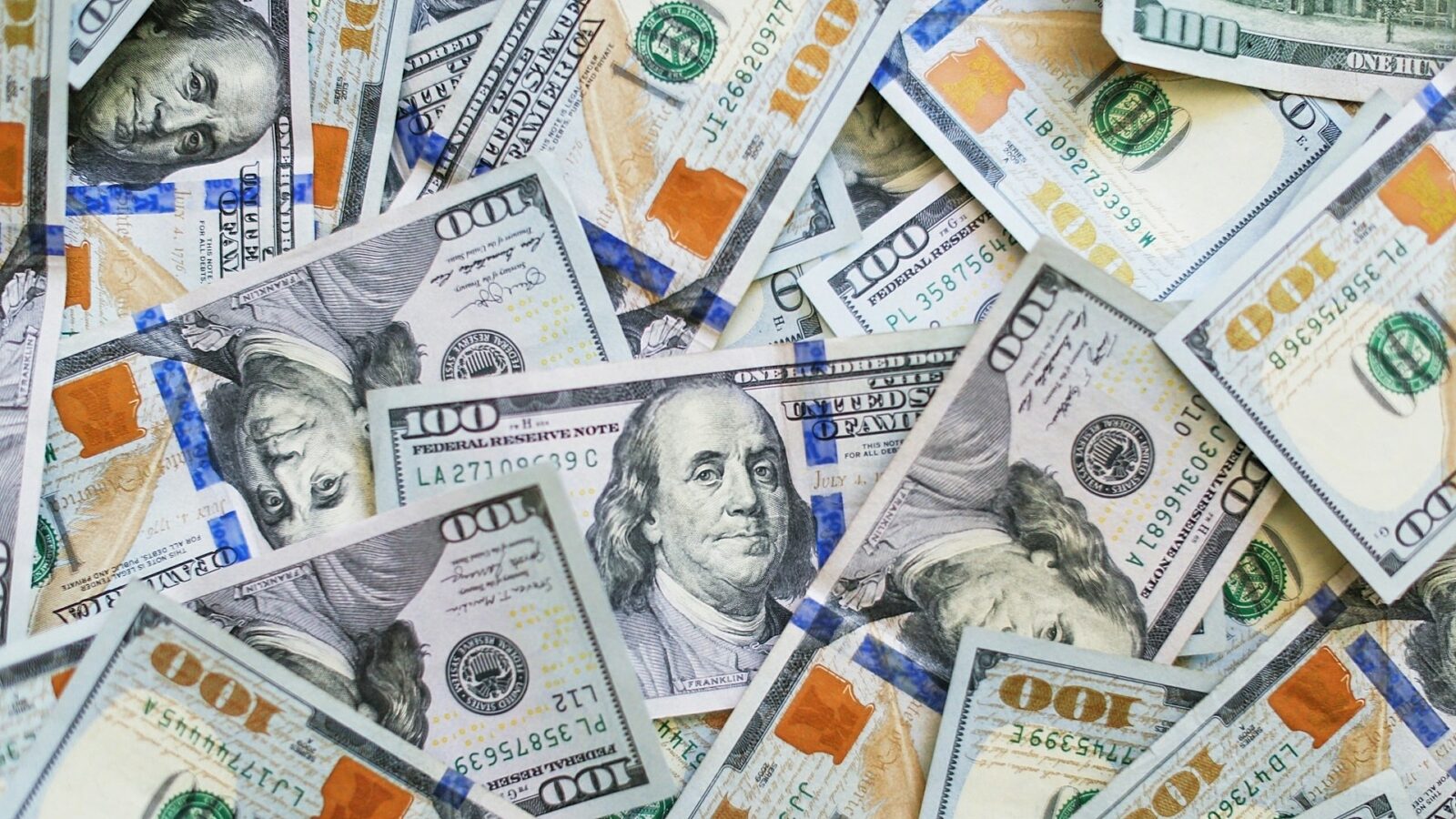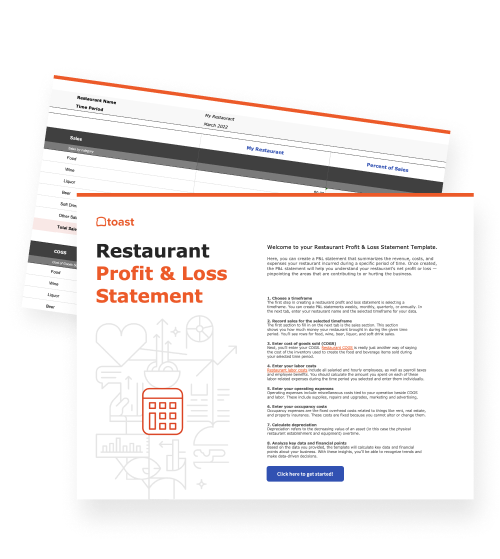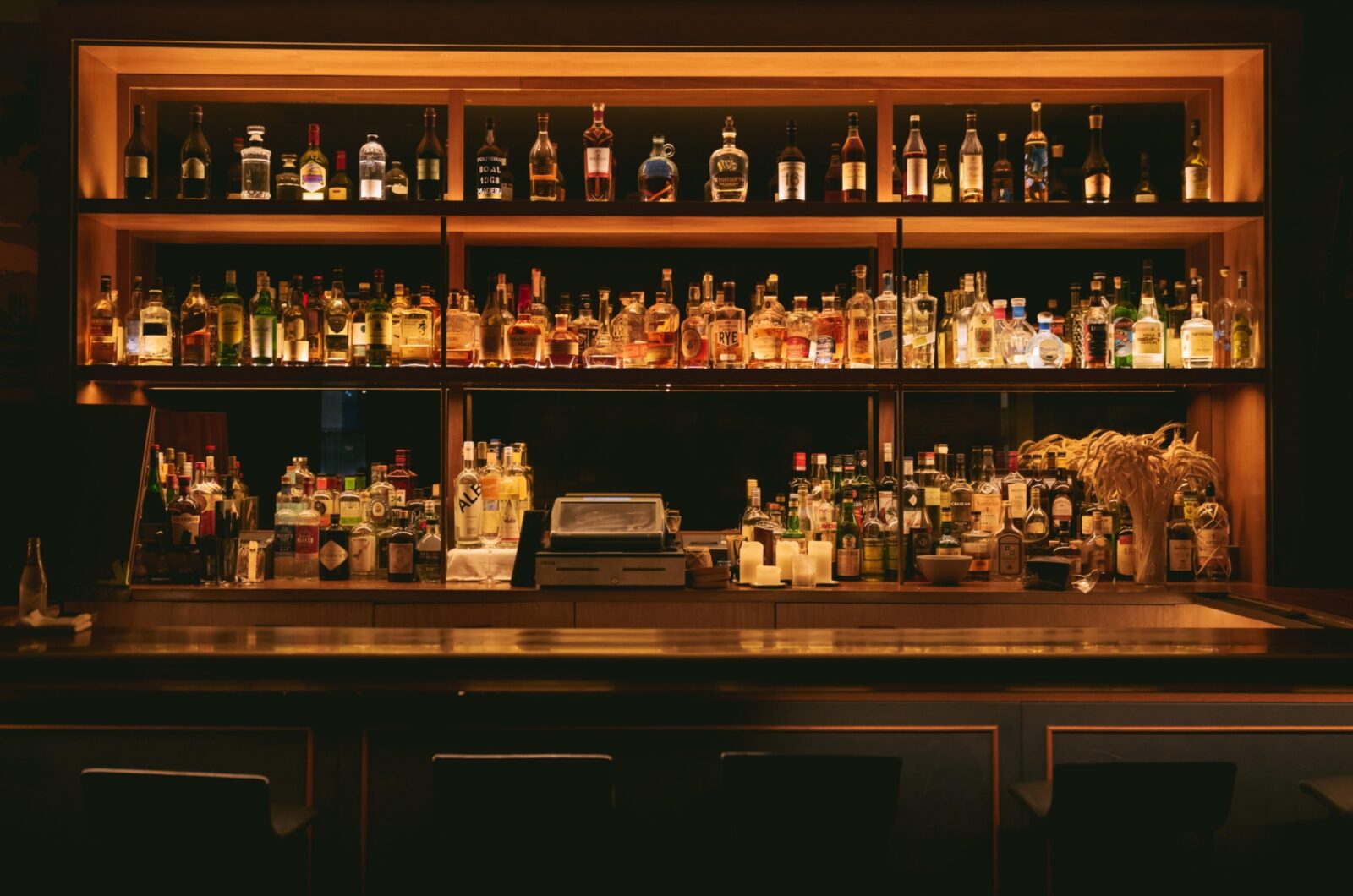
Cash Flow Management for Restaurants
Strong cash flow is essential to running a successful business. Here is how to calculate and manage cash flow in your restaurant.

Tessa ZuluagaAuthor


Restaurant Profit and Loss Statement Template
Evaluate your restaurant's financial strengths and weaknesses with the free P&L and income statement template.
Understanding cash flow is essential for running a successful restaurant. Managing cash flow involves creating detailed statements, projecting income and expenses, reducing costs, and seeking professional advice when needed. By mastering cash flow management, restaurants can thrive in a competitive industry. So how do you manage your restaurant's cash flow?
In this article, we’ll outline what cash flow is, how to calculate it, and then how to best manage it.
Balance Sheet Template
This template will help you forecast short and long-term cash flow and assess the overall financial health of your restaurant.

What is Cash Flow?
Understanding your restaurant’s cash flow is key to successfully running your business. Restaurant cash flow is defined as the net amount of cash being transferred into and out of your restaurant. There are two components of cash flow: cash inflow and cash outflow. Cash inflows include cash received from customers or other financing sources – for example, both food/beverage sales and small business loans are considered cash inflows. Cash outflows include cash spent on operating costs like rent, wages, utilities, food and other supplies. It can also include cash spent on buying assets for your restaurant.
How to Calculate Cash Flow?
Now that you understand the difference between cash inflows and outflows, let’s calculate your restaurant cash flow.
Start by adding all the individual cash inflow items to calculate total inflows. To calculate the total outflows, add all the cash outflow items. Then, simply subtract total cash outflows from total cash inflows.
Cash flow = total cash inflows - total cash outflows
What is a Cash Flow Projection?
It is important to have some sort of cash flow forecasting or cash flow projections. By having a projection of your restaurant’s future financial position, you can better navigate the ups and downs in the future. This can help you figure out when to make a big purchase for your restaurant, as well as better plan for slow periods by ensuring you have enough cash to carry you through, avoiding future cash flow problems.
For those slow periods, you also can consider applying for a Toast Capital Loan. Toast Capital provides eligible Toast customers with access to loans from $5K to $300K that can be used for any restaurant need. Toast Capital Loans have one fixed cost with automated repayment that flexes with sales* – with no compounding interest and no personal guarantees. Once approved and signed your Toast Capital Loan agreement, you can expect funds to be sent to your bank account in as soon as one business day**.
Toast Capital Loans are issued by WebBank. Loans are subject to credit approval and may not be available to borrowers in certain jurisdictions. WebBank reserves the right to change or discontinue this program without notice.
*Toast Capital Loans offer different target repayment terms ranging from 90 days to 360 days, depending on eligibility. The maximum repayment term is 60 days following the end of the target repayment term. Any outstanding balance due at the end of the maximum term will be collected automatically via ACH.
**Funds are typically disbursed within 1-2 business days after signing your credit agreement.
How to Manage Cash Flow for a Restaurant
Here are some cash flow management tips for your restaurant.
1. Get a good visibility of your cash movement
Restaurant owners should consider creating a detailed restaurant cash flow statement to get visibility into cash movement. If you don’t know where your cash is coming from or getting spent on, you won’t be able to make informed decisions. To create a detailed, accurate cash flow statement, you need access to accurate and accessible data - this is the foundation of good cash flow management.
2. Create your restaurant’s cash flow projections
Once you have visibility into your cash movement, you should create cash flow projections that capture accurate expectations for income and expenses over a given period of time. You can use this restaurant numbers and metrics calculator to help you get there.
This will help you be more prepared in the face of unexpected expenditures, such as additional vendor payments, or damaged equipment.
3. Streamline your expenses
If you want to improve your restaurant’s cash flow position, you can start thinking about reducing your overhead costs. There are many ways to do this – you can try to negotiate the price down with key vendors or reinvent your menu by removing low-profit items. Utilize point-of-sale (POS) systems to gather real-time sales data and integrate it into your cash flow projections.
4. Understand your Profit and Loss Statement (P & L)
A P&L statement provides a comprehensive overview of your restaurant's revenue and expenses over a specific period, typically monthly, quarterly, or annually. By analyzing this statement, you can understand the sources of your cash inflow and the breakdown of your cash outflow. By comparing P&L statements from different periods, you can identify trends in revenue and expenses.
Calculating a profit and loss statement is relatively simple. The basic formula is:
Sales - Cost of Goods Sold - Expenses = Profit/Loss
5. Control Inventory Costs
Inventory management is critical in the restaurant industry. Restaurant inventory management refers to the process of tracking and managing the ordering, storage, and movement of ingredients and other kitchen products. Keep track of inventory levels and food costs to avoid overstocking or running out of crucial items. Analyze your offering to identify high-profit and low-profit menu items, and adjust your purchasing accordingly.
6. Manage a Restaurant Balance Sheet
A restaurant balance sheet lists a restaurant’s assets, liabilities, and equity at a given point in time. This statement can be used to forecast short and long-term cash flow and assess the overall financial health of the restaurant.
Maintaining a restaurant balance sheet allows you to simultaneously verify the accuracy of a profit and loss statement while getting a more holistic view of the restaurant’s financial health.
7. Seek Professional Advice
Understanding financial statements can be difficult. Consider consulting with a financial advisor or accountant specializing in the restaurant industry. They can provide expert guidance tailored to your specific circumstances and help you develop a comprehensive cash flow management plan.
Start optimizing financial performance today
Effective restaurant cash flow management is crucial to the success of any restaurant business. Your business is going to have cash flow fluctuations. But by understanding cash flow dynamics, calculating cash flow accurately, and projecting future cash needs, restaurateurs can lay a solid foundation for sustained growth in the industry going forward. To start taking control of your bottom line today, check out xtraCHEF by Toast.
Looking to get access to your money faster? Introducing Instant Deposit by Toast. With instant deposit, your funds are typically available in less than 30 minutes. Need your deposits on a holiday or weekend? We've got you covered. You can also access your funds on demand with instant deposit. Check it out today!
Restaurant Cost Control Guide
Use this guide to learn more about your restaurant costs, how to track them, and steps you can take to help maximize your profitability.

Is this article helpful?
DISCLAIMER: This information is provided for general informational purposes only, and publication does not constitute an endorsement. Toast does not warrant the accuracy or completeness of any information, text, graphics, links, or other items contained within this content. Toast does not guarantee you will achieve any specific results if you follow any advice herein. It may be advisable for you to consult with a professional such as a lawyer, accountant, or business advisor for advice specific to your situation.
Read More
Subscribe to On the Line
Sign up to get industry intel, advice, tools, and honest takes from real people tackling their restaurants’ greatest challenges.



